Understanding Stains on Wooden Floors
Stains on wooden floors can be caused by a variety of factors, including spills, pet accidents, and dirt and dust buildup. Water stains, oil stains, grease stains, and ink stains are some of the common types of stains that can occur on wooden floors. It is important to remove stains promptly to maintain the beauty and integrity of the floor.
Water stains are caused by water seeping into the wood, resulting in discoloration. Oil stains occur when oil-based products, such as cooking oil, seep into the wood. Grease stains are caused by grease-based products, such as motor oil, seeping into the wood. Ink stains are caused by ink-based products, such as markers, seeping into the wood.
Removing stains from wooden floors is important to prevent them from becoming permanent and causing further damage. Stains can lead to discoloration, warping, and cracking of the wood. Additionally, stains can attract dirt and dust, making it harder to keep the floor clean.
By identifying the type of stain and taking the appropriate steps to remove it, home and business owners can effectively maintain the beauty and integrity of their wooden floors. This may involve using specific cleaning solutions or techniques tailored to the type of stain.
The Science Behind Stains: Why Do They Occur?
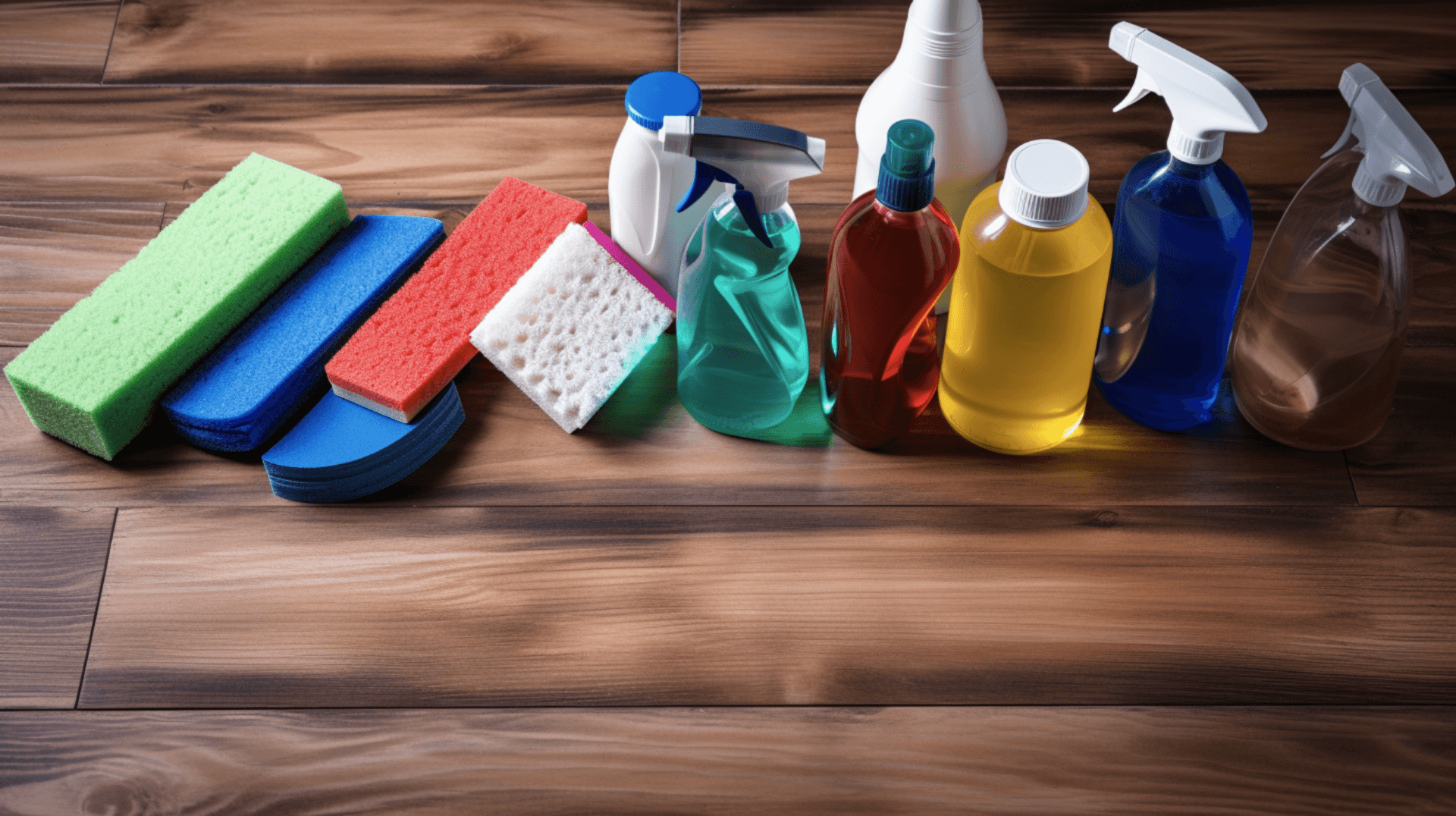
Stains on wooden floors can be caused by a variety of sources, including spills, pet accidents, and dirt and dust buildup. Water, oil, grease, and ink are some of the most common substances that can cause stains on wooden floors. Water stains occur when water seeps into the wood, resulting in discoloration. Oil stains occur when oil-based products, such as cooking oil, seep into the wood. Grease stains are caused by grease-based products, such as motor oil, seeping into the wood. Ink stains are caused by ink-based products, such as markers, seeping into the wood.
The type of stain and the material it is made of can affect how difficult it is to remove. Water stains are generally easier to remove than oil, grease, or ink stains, as they are not as deeply embedded in the wood. Oil, grease, and ink stains are more difficult to remove as they are more deeply embedded in the wood and can cause discoloration.
Additionally, the presence of water or condensate pipes in the sub-floor void can increase the risk of freezing if the floor is insulated and the pipes are left exposed to the colder void environment. This can lead to potential damage and may require repairs.
To effectively remove stains from wooden floors, it is important to use the appropriate cleaning solutions and techniques for each type of stain. Prompt action is also crucial, as allowing stains to set for a longer period of time can make them more difficult to remove.
Identifying the Type of Stain on Your Wooden Floor
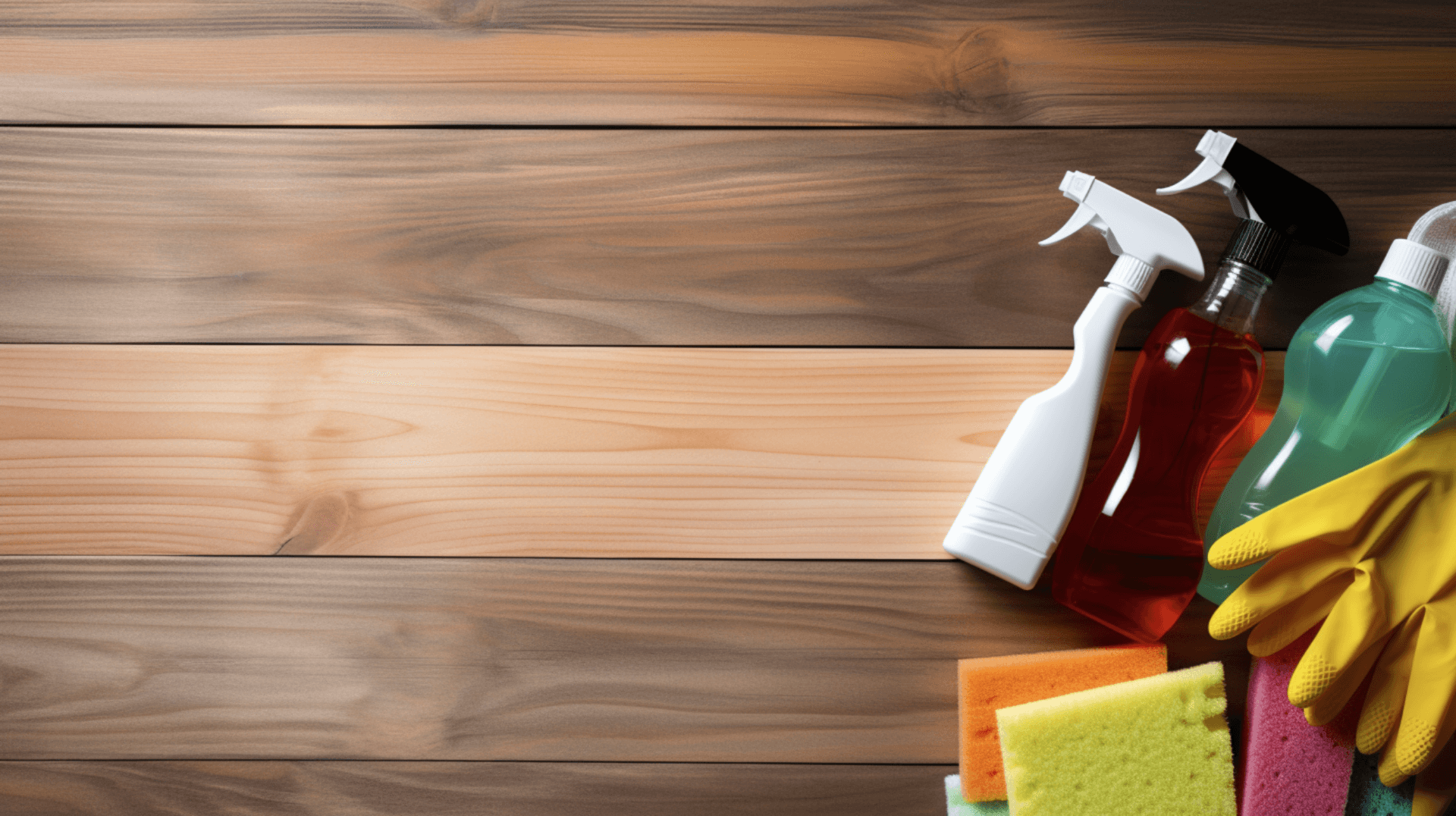
Identifying the type of stain on your wooden floor is crucial before attempting to remove it. Different types of stains require different cleaning solutions and techniques, and using the wrong approach can potentially cause further damage to the floor. Here’s how you can distinguish between different types of stains and the signs to look for:
- Water-based stains: These stains typically cause discoloration of the wood that is lighter than the surrounding area. The affected area may also feel damp to the touch. Water-based stains are often caused by water seeping into the wood, resulting in discoloration.
- Oil-based stains: These stains can be more challenging to identify as they can cause discoloration similar to water-based stains. oil-based stains may also darken the wood, and the affected area may feel greasy or sticky to the touch. Oil-based stains are usually caused by oil-based products, such as cooking oil, penetrating the wood.
- Wax-based stains: Similar to water-based stains, wax-based stains can cause discoloration of the wood. they can also leave a waxy or glossy residue on the surface of the wood. Wax-based stains are typically caused by wax-based products, such as furniture polish, seeping into the wood.
It is important to identify the type of stain before attempting removal because different stains require specific cleaning solutions and techniques. Using the wrong solution or technique can potentially worsen the stain or damage the floor further. By correctly identifying the stain, you can choose the appropriate cleaning method and increase the chances of successful stain removal without causing harm to the wood.
Additionally, assessing the condition of any steel supports in the sub-floor void is important, as corrosion or structural fatigue can increase the risk of water damage. Installing insulation may also increase the risk of warm, moist air condensing on the steel supports, leading to potential damage.
Overall, understanding the characteristics and signs of water-based, oil-based, and wax-based stains is essential for effective stain removal and maintaining the integrity of your wooden floor.
Preparing Your Wooden Floor for Stain Removal

Preparing Your Wooden Floor for Stain Removal:
Before attempting to remove stains from your wooden floor, it is important to take the necessary safety precautions to protect yourself and your floor. Wear protective gloves and eyewear to shield your hands and eyes from any cleaning solutions or debris. Ensure that the area is well-ventilated to avoid inhaling any fumes from the cleaning solutions. Keep children and pets away from the area to prevent accidents. Additionally, make sure any electrical appliances are unplugged to avoid any potential hazards.
To remove stains from your wooden floor, you will need a few materials and tools. These include a vacuum cleaner to remove any dirt and debris, a soft-bristled brush to gently scrub the affected area, a mop and bucket for cleaning, a cloth or sponge for wiping, and a cleaning solution suitable for the type of stain you are dealing with. Depending on the type of stain, you may also need a wood cleaner, a degreaser, or a wax remover.
To protect your wooden floor from further damage during the stain removal process, it is important to use the appropriate cleaning solutions and techniques for each type of stain. Start by vacuuming the area to remove any loose dirt and debris. Then, use a soft-bristled brush and the appropriate cleaning solution to gently scrub the stain. Avoid using abrasive materials or tools, such as steel wool or sandpaper, as these can scratch the wood. After removing the stain, wipe the area with a clean cloth or sponge to remove any residue.
By following these safety precautions and using the right materials and techniques, you can effectively remove stains from your wooden floor without causing further damage.
Techniques for Removing WaterBased Stains
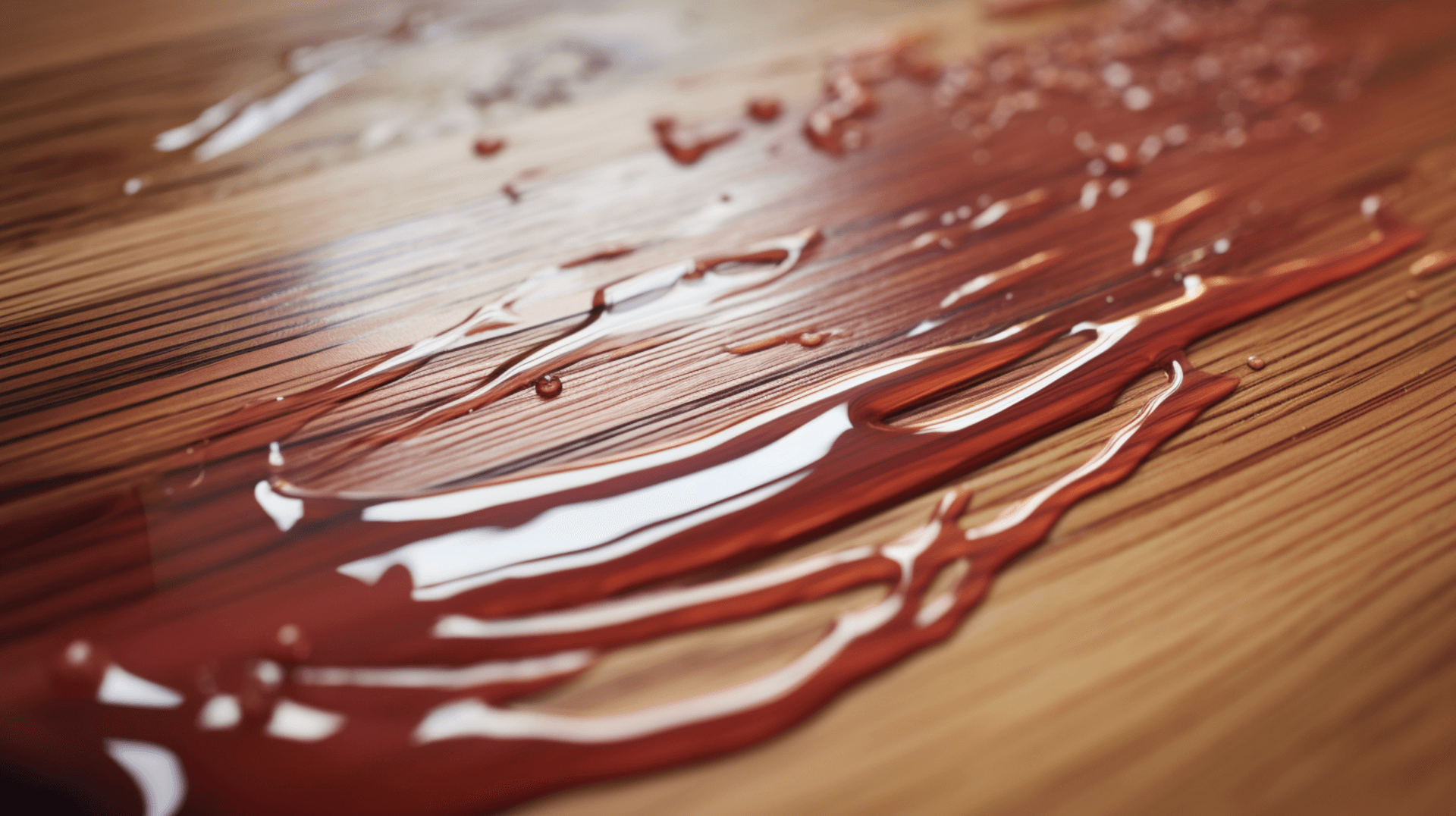
Removing water-based stains from wooden floors can be effectively done using a cleaning solution and a soft-bristled brush. Start by choosing a cleaning solution specifically designed for wood floors and suitable for the type of stain you are dealing with. Apply the cleaning solution to the affected area and use a soft-bristled brush to gently scrub the stain. This method helps to lift the stain from the wood and remove it effectively.
Alternatively, using a steam cleaner can also be an option for removing water-based stains from wooden floors. Steam cleaners use hot steam to loosen and remove dirt and debris from the surface of the wood. The steam can also help to lift the stain, making it easier to remove. The advantage of using a steam cleaner is that it is a chemical-free method and can effectively remove deep-seated stains. it is important to follow the manufacturer’s instructions and avoid using excessive steam or leaving the steam cleaner in one spot for too long, as this can potentially damage the wood.
Overall, using a cleaning solution and a soft-bristled brush or a steam cleaner are effective methods for removing water-based stains from wooden floors. Choose the method that suits your preferences and follow the appropriate instructions to achieve the best results.
Techniques for Removing OilBased Stains
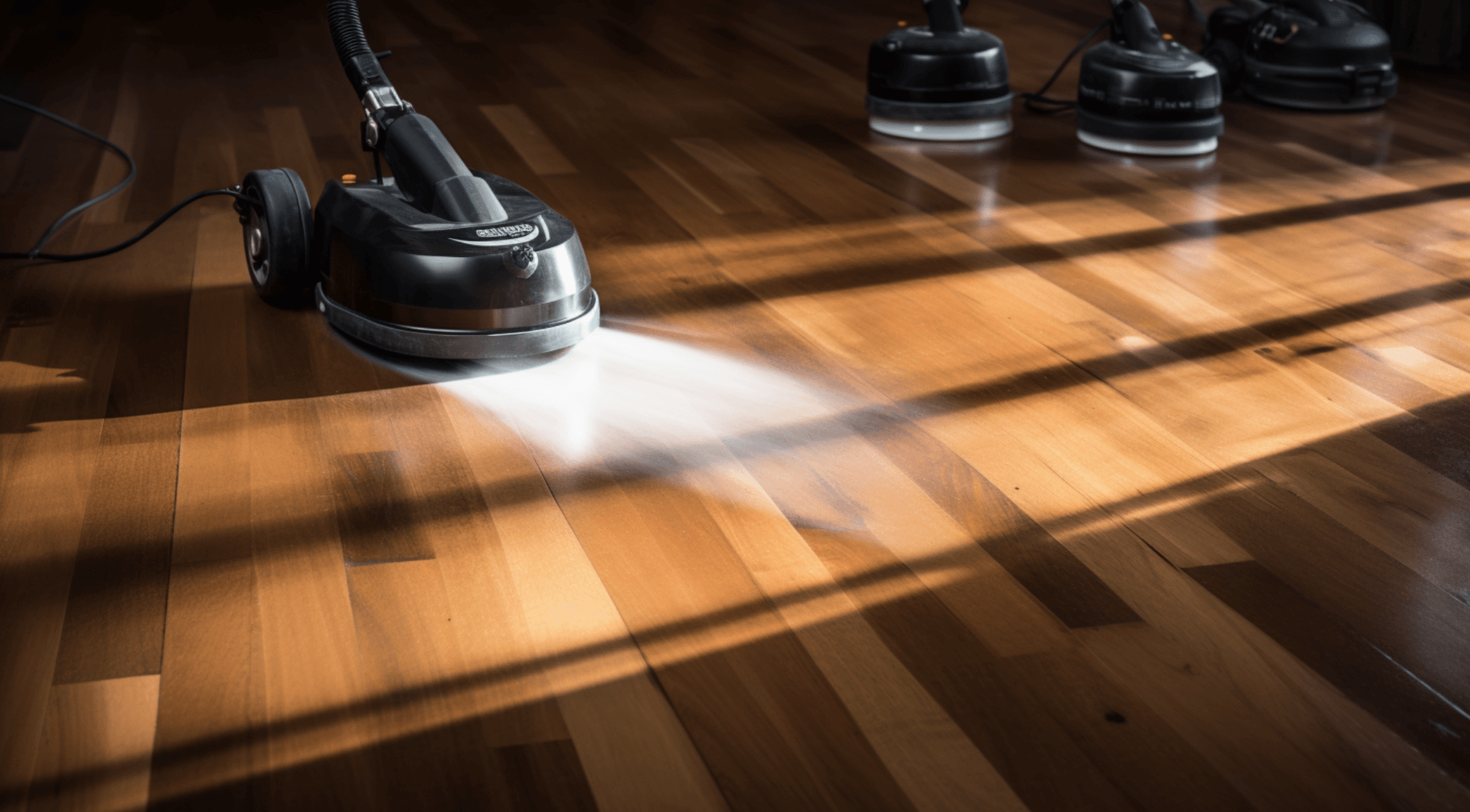
The original answer is still applicable and provides accurate information on the best methods for removing oil-based stains from wooden floors. based on the new context provided, here is a refined version of the answer:
Using a cleaning solution is the most common and effective method for removing oil-based stains from wooden floors. Start by choosing a cleaning solution specifically designed for wood floors and suitable for the type of stain you are dealing with. Apply the cleaning solution to the affected area and use a soft-bristled brush to gently scrub the stain. This method helps to lift the stain from the wood and remove it effectively.
Sanding is another effective method for removing oil-based stains from wooden floors. Start by using a vacuum cleaner to remove any dirt and debris from the affected area. Then, use a sanding machine to sand the area until the stain is removed. This method is more time-consuming and labor-intensive than using a cleaning solution, but it can be effective for removing deep-seated stains. It is important to ensure that the timber moisture content does not exceed 20%, as insulating timber with high levels of moisture/rot or decay can lead to adding additional stress to the timbers and accelerating their decay or covering.
When breaking existing longer boards into smaller repairs during removal, use a carpenters square to mark the cutting area and score with a razor knife. Use an oscillating saw to make a precise cut.
Overall, using a cleaning solution and a sanding method are the best techniques for removing oil-based stains from wooden floors. Choose the method that suits your preferences and follow the appropriate instructions to achieve the best results.
Techniques for Removing WaxBased Stains
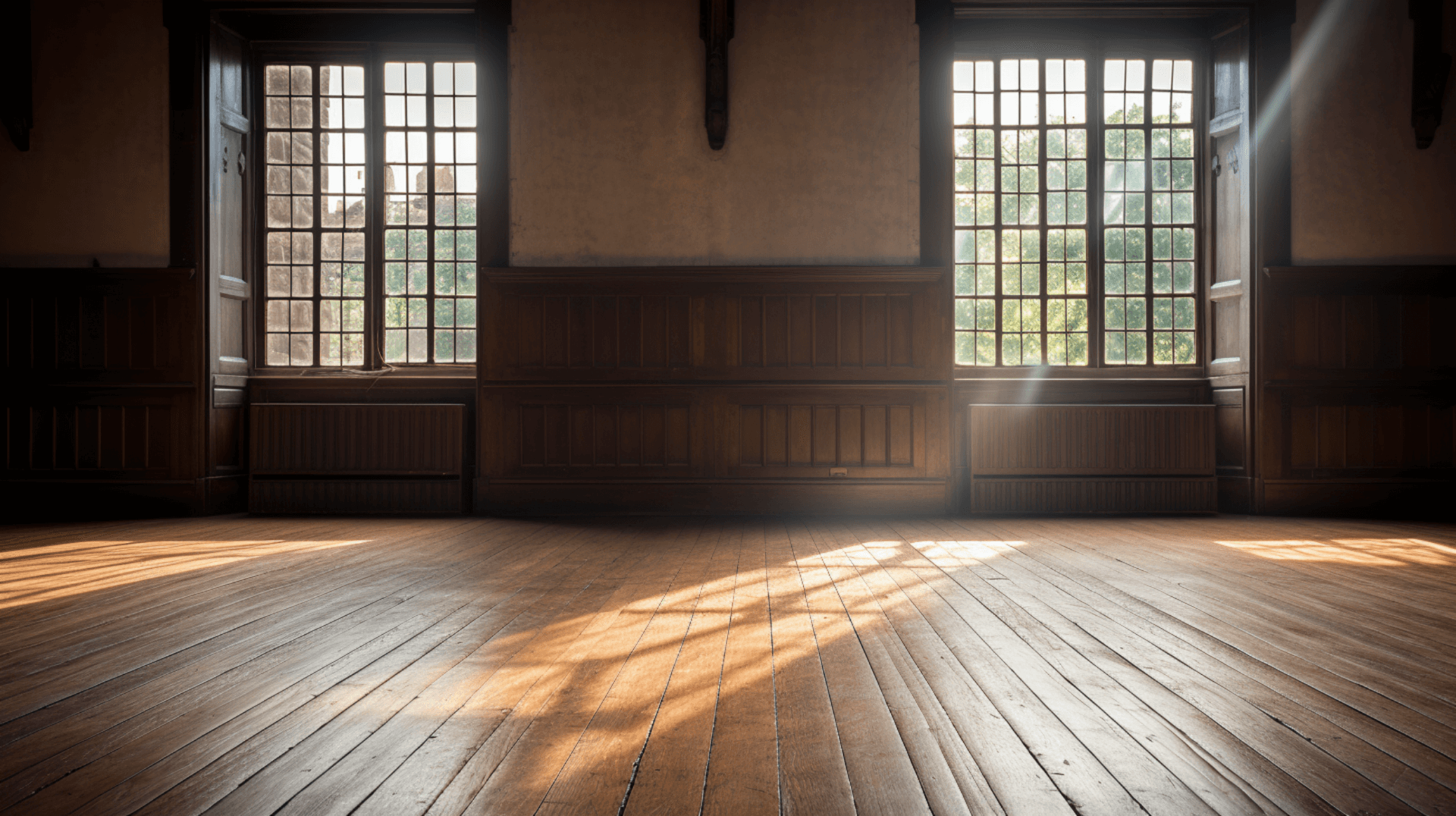
Techniques for Removing Wax-Based Stains
Removing wax-based stains from wooden floors can be effectively done using a heat method or a scraping method.
Heat Method:
The heat method involves using a heat gun or hairdryer to heat the wax and loosen it from the wood. Start by using a vacuum cleaner to remove any dirt and debris from the affected area. Then, set the heat gun or hairdryer to the lowest setting and hold it about 6 inches away from the wax. Move the heat source in a circular motion over the wax until it softens and loosens. Once the wax is softened, use a soft-bristled brush to gently scrub the wax away. Finally, wipe the area with a cloth or sponge to remove any residue.
Pros of the Heat Method:
– Effective in softening and removing wax-based stains
– Relatively quick and easy to perform
– Does not require harsh chemicals
Cons of the Heat Method:
– Requires caution to avoid damaging the wood with excessive heat
– May not be suitable for delicate or sensitive wood surfaces
Scraping Method:
The scraping method involves using a plastic scraper to remove the wax from the wood. Start by using a vacuum cleaner to remove any dirt and debris from the affected area. Then, use a plastic scraper to gently scrape away the wax. This method is more time-consuming and labor-intensive than the heat method, but it can be effective for removing deep-seated stains.
Pros of the Scraping Method:
– Can effectively remove stubborn wax-based stains
– Does not require heat or chemicals
– Can be used on delicate or sensitive wood surfaces
Cons of the Scraping Method:
– Requires more time and effort compared to the heat method
– May leave behind residue or require additional cleaning steps
Overall, both the heat method and the scraping method can be effective for removing wax-based stains from wooden floors. Choose the method that suits your preferences and the condition of your floor, and follow the appropriate instructions to achieve the best results.
Preventing Future Stains on Your Wooden Floor
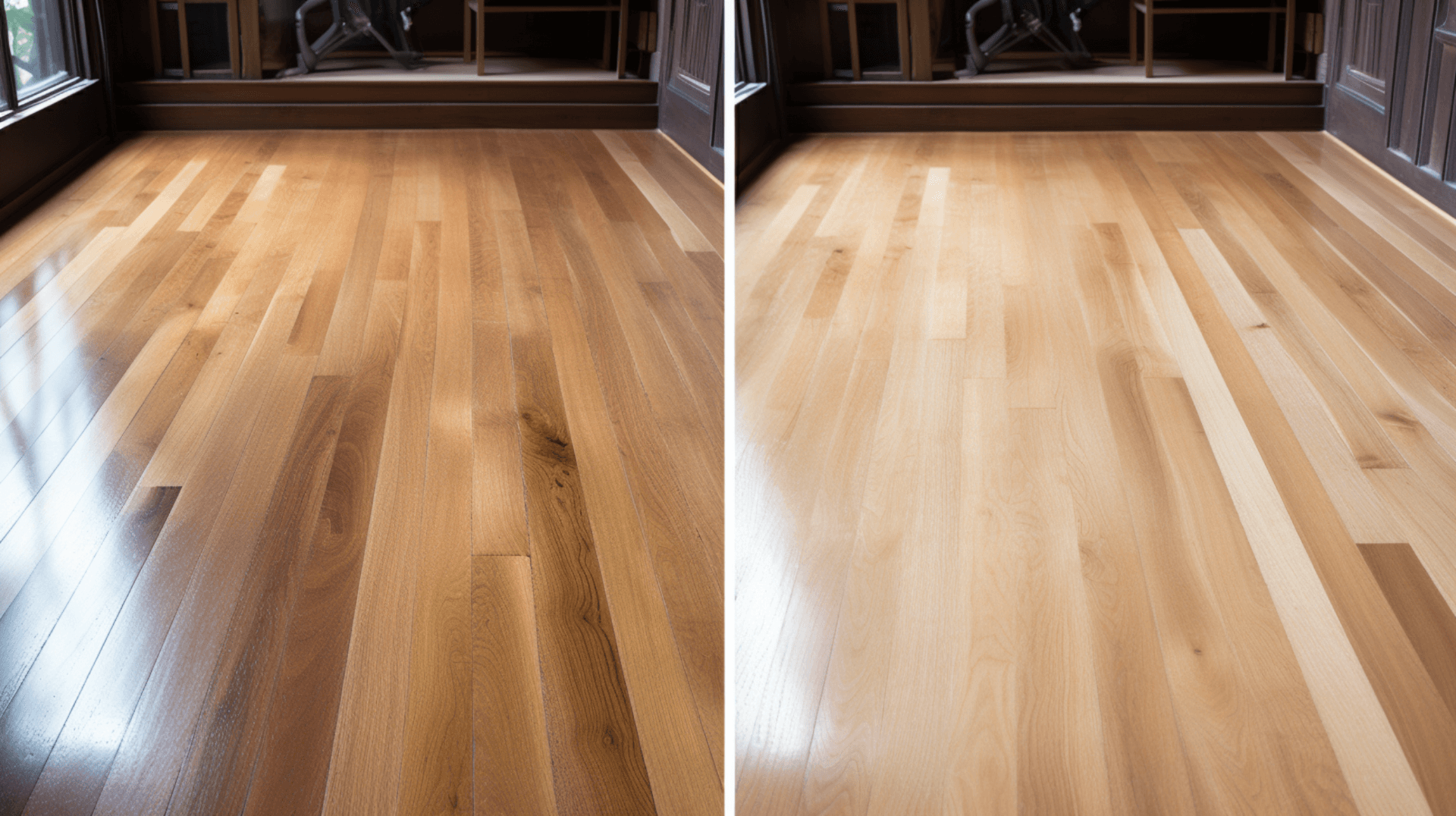
Preventing Future Stains on Your Wooden Floor
Preventing stains on wooden floors is essential for maintaining their beauty and longevity. The best way to prevent stains is to practice regular maintenance, use protective products, and ensure proper insulation.
Regular Maintenance:
Regular maintenance is key to preventing stains on wooden floors. Here are some best practices for regular maintenance:
- Sweep or Vacuum Regularly: Regularly sweep or vacuum the floor to remove dirt, dust, and debris that can cause staining. Use a soft-bristled brush or a vacuum cleaner with a hardwood floor attachment to avoid scratching the surface.
- Clean Spills Immediately: Clean up spills and messes immediately to prevent them from seeping into the wood and causing stains. Use a soft cloth or paper towel to blot the spill, and then clean the area with a mild wood floor cleaner.
- Inspect for Damage: Regularly inspect the floor for any signs of damage, such as cracks, scratches, or worn-out finishes. Repair or refinish the floor as needed to maintain its protective barrier against stains.
Protective Products:
Using protective products can help to protect wooden floors from stains. Here are some recommended products:
- Sealants and Finishes: Apply a sealant or finish to create a protective barrier against dirt, spills, and stains. Choose a product specifically designed for wooden floors and suitable for the type of finish on your floor.
- Mats and Rugs: Place mats or rugs at entrances and high-traffic areas to trap dirt, debris, and moisture. This will prevent them from being tracked onto the floor and causing stains.
- Furniture Pads: Attach furniture pads to the legs of chairs, tables, and other furniture to prevent scratches and stains caused by movement.
Insulation:
Proper insulation is important for preventing moisture-related stains on wooden floors. Ensure that your floor is properly insulated to prevent condensation and moisture buildup. This will help to protect the floor from potential water damage and stains.
By following these best practices, practicing regular maintenance, using protective products, and ensuring proper insulation, you can effectively prevent stains on your wooden floor and keep it looking its best for years to come.
When to Seek Professional Help for Stain Removal
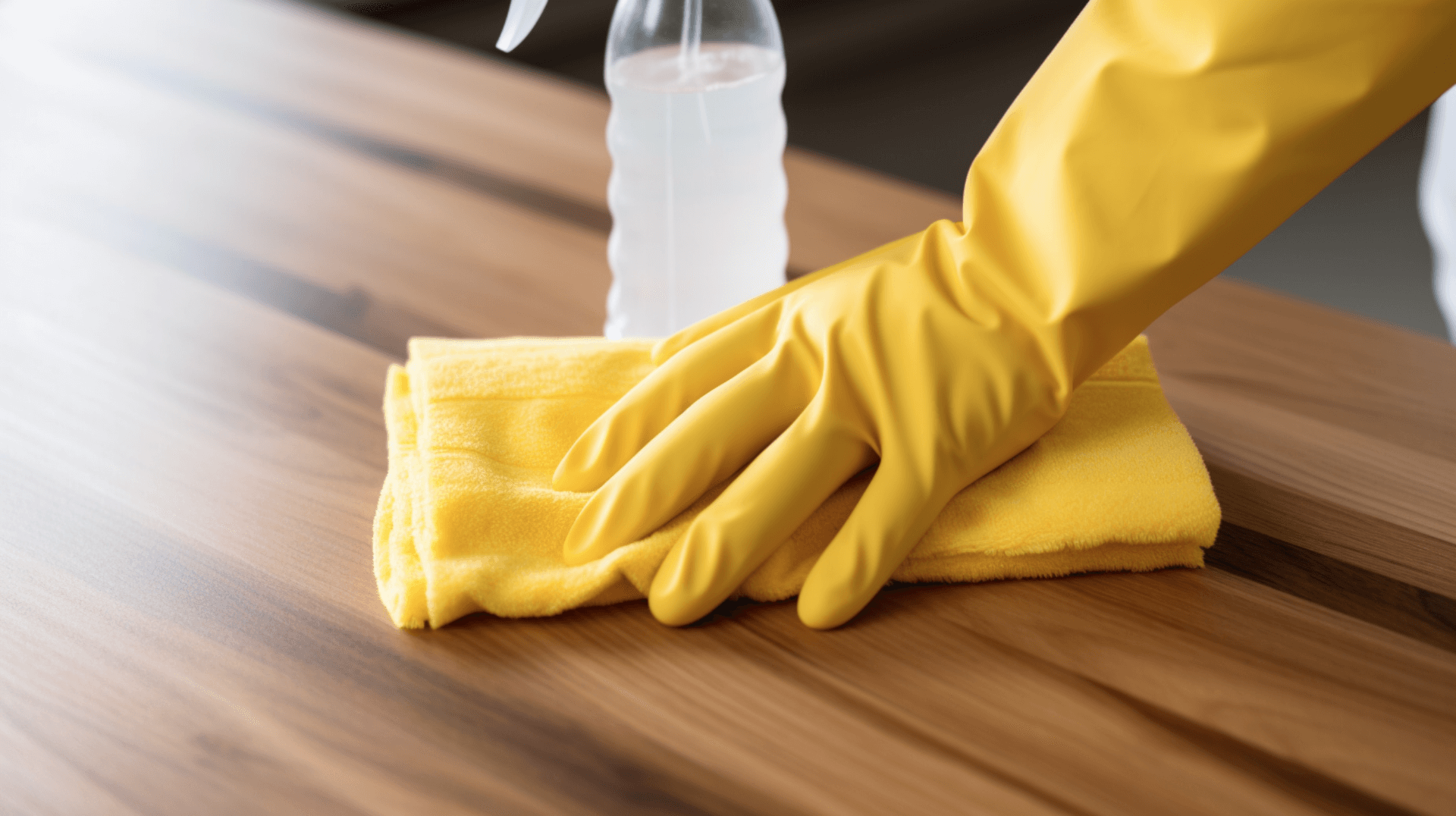
When to Seek Professional Help for Stain Removal
There are certain types of stains that require professional help for removal. Stains caused by oil-based substances, wax-based substances, deep-seated stains, water damage, and pet urine are often difficult to remove without the expertise and specialized tools of professionals. Hiring professionals like GJP Floor Sanding for stain removal can be highly beneficial for home owners and business owners alike.
Benefits of Hiring Professionals
Hiring professionals like GJP Floor Sanding for stain removal offers several benefits. Professionals have the expertise and experience to effectively remove even the toughest stains without causing further damage to the floor. We use specialized tools and techniques to ensure thorough stain removal. Additionally, professionals can provide advice on how to prevent future stains and maintain the beauty of your wooden floor. We are also knowledgeable about the current relevant national building regulations and can ensure that the floor meets the required thermal transmittance (U-value) standards.
Services Offered by GJP Floor Sanding
GJP Floor Sanding offers a range of services for stain removal. We specialize in deep cleaning, sanding, and refinishing to effectively remove stubborn stains from wooden floors. Our team of professionals is trained to identify the type of stain and use the appropriate techniques and products for its removal. We can also provide advice on how to prevent future stains and maintain the beauty of your floor. Additionally, GJP Floor Sanding ensures that the floor meets the required thermal transmittance (U-value) standards to comply with current national building regulations.
The GJP Floor Sanding Approach to Stain Removal

GJP Floor Sanding’s approach to stain removal is highly effective due to our use of specialized tools and techniques. We employ a combination of deep cleaning, sanding, and refinishing to ensure thorough stain removal without causing further damage to the floor. Additionally, we apply protective products such as sealants and finishes to create a barrier against dirt, spills, and stains, further enhancing the longevity and appearance of the wooden floor.
To protect the wooden floor during the stain removal process, GJP Floor Sanding takes several precautions. We begin by using a vacuum cleaner to remove any dirt and debris from the affected area, ensuring a clean surface for the stain removal process. We also utilize furniture pads to prevent scratches and stains caused by furniture movement. Furthermore, we ensure that the floor meets the required thermal transmittance (U-value) standards, complying with national building regulations and providing optimal insulation.
By following these steps, GJP Floor Sanding ensures that the stain removal process is thorough, effective, and safe for the wooden floor. Our attention to detail and commitment to protecting the floor’s integrity make us a reliable choice for homeowners and business owners seeking professional stain removal services.
What Our Experts Say: Tips and Advice from GJP Floor Sanding Professionals
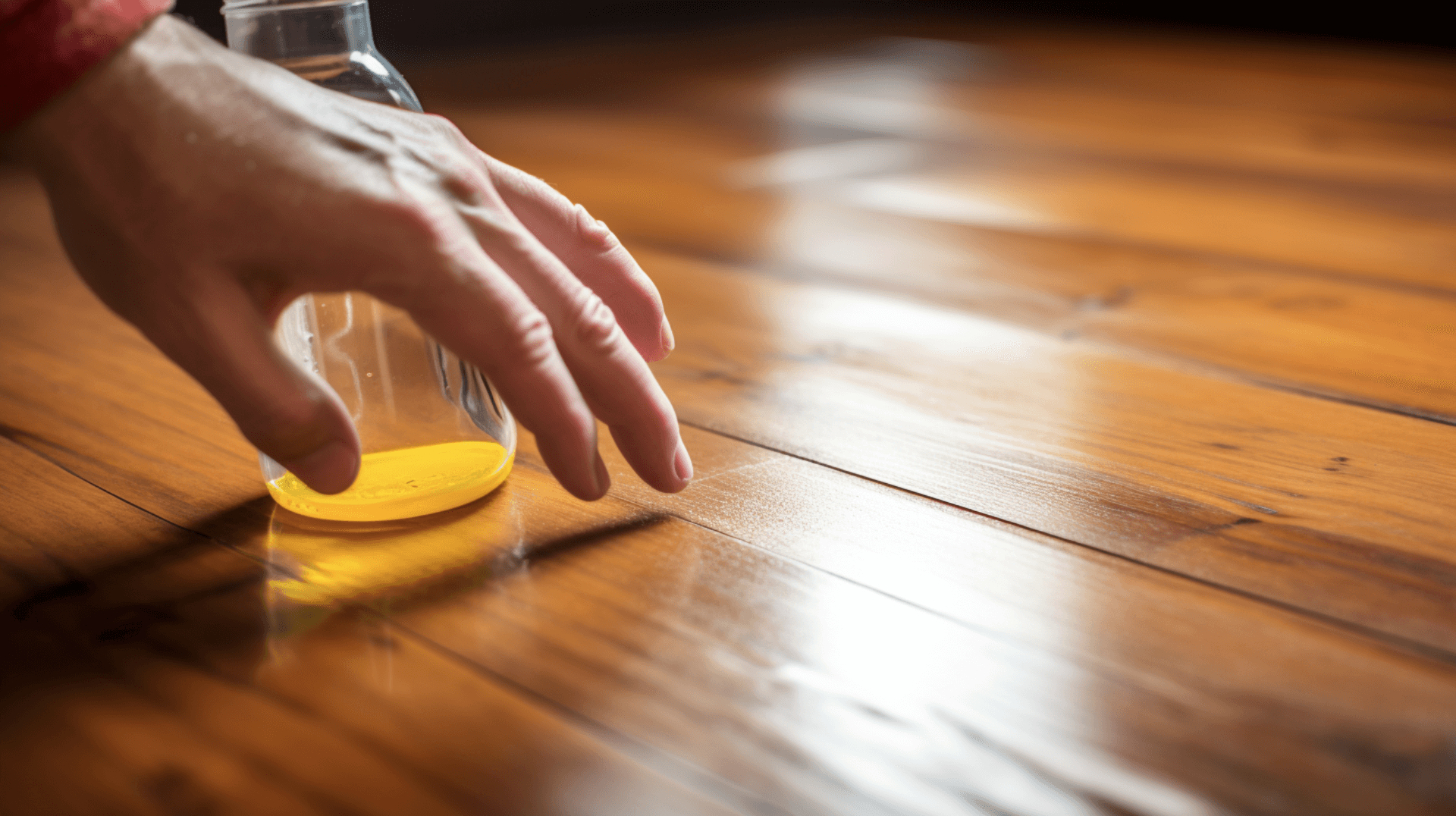
The original answer is still applicable and provides accurate information on maintaining stain-free wooden floors and removing stubborn stains. based on the new context provided, here is a refined version of the answer:
GJP Floor Sanding professionals have several tips and advice for maintaining stain-free wooden floors. We recommend regularly sweeping or vacuuming the floor to remove dirt, dust, and debris. Placing mats or rugs at entrances and high-traffic areas can help trap dirt, debris, and moisture, preventing us from causing stains. Attaching furniture pads to the legs of chairs, tables, and other furniture can prevent scratches and stains caused by movement.
For homeowners and business owners dealing with stubborn stains, GJP Floor Sanding professionals suggest using a heat method or a scraping method. The heat method involves using a heat gun or hairdryer to heat the wax and loosen it from the wood, while the scraping method involves using a plastic scraper to remove the wax. We also recommend lightly abrading the floor and applying a recommended conditioning product when it loses its luster. For sports floors, following the specific recommendations from the Maple Flooring Manufacturers Association (MFMA) is advised.
GJP Floor Sanding professionals can help in maintaining the longevity and aesthetics of your wooden floors by applying a sealant or finish to create a protective barrier against dirt, spills, and stains. We can provide advice on how to prevent future stains and maintain the beauty of your floor. Additionally, we ensure that the floor meets the required thermal transmittance (U-value) standards to comply with current national building regulations. Our expertise and experience make us a reliable choice for homeowners and business owners seeking guidance on maintaining stain-free wooden floors.
Ready to Restore Your Wooden Floor? Contact GJP Floor Sanding
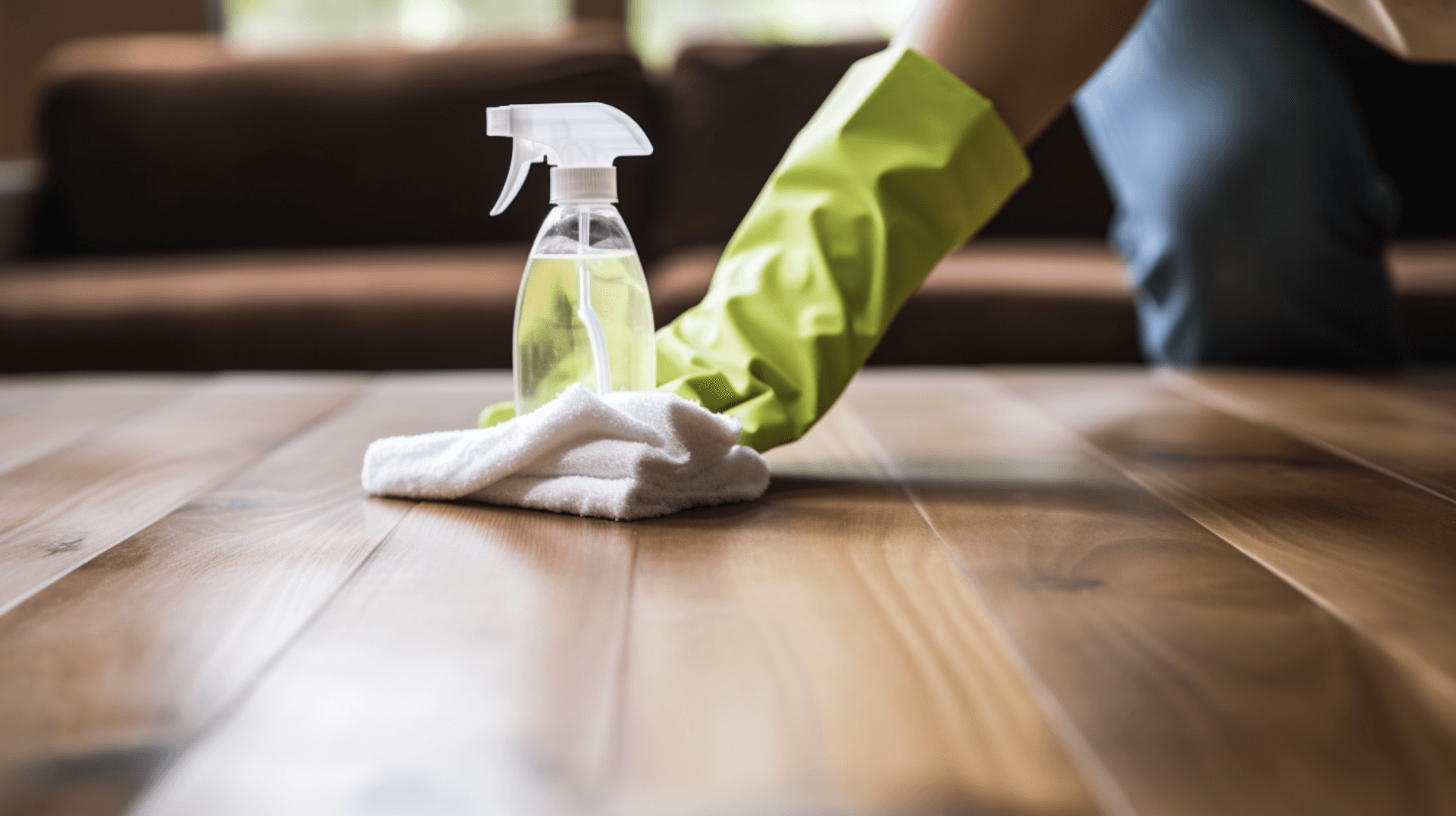
GJP Floor Sanding is the go-to choice for professional stain removal services for wooden floors. With our expertise and experience, we can effectively remove even the toughest stains without causing further damage to the floor. We use specialized tools and techniques to ensure thorough stain removal, and can provide advice on how to prevent future stains and maintain the beauty of your wooden floor.
To get in touch with GJP Floor Sanding for professional stain removal services, you can contact us via our website or call us directly. When contacting them, provide information about the type of floor, the type of stain, and the size of the area affected. This will help us to provide an accurate quote and determine the best approach for stain removal.
Choosing GJP Floor Sanding for your wooden floor stain removal needs offers several benefits. We have the expertise and experience to effectively remove even the toughest stains without causing further damage to the floor. We use specialized tools and techniques to ensure thorough stain removal. Additionally, we provide advice on how to prevent future stains and maintain the beauty of your wooden floor. We also ensure that the floor meets the required thermal transmittance (U-value) standards to comply with current national building regulations.
With our expertise and experience, GJP Floor Sanding is the go-to choice for professional stain removal services for homeowners and business owners. Contact us today to restore the beauty of your wooden floor and prevent future stains.
